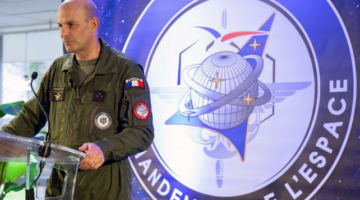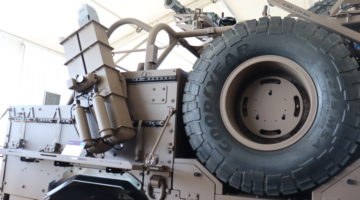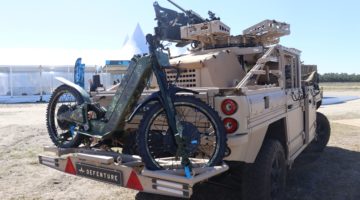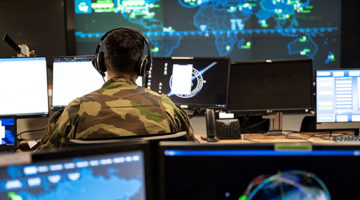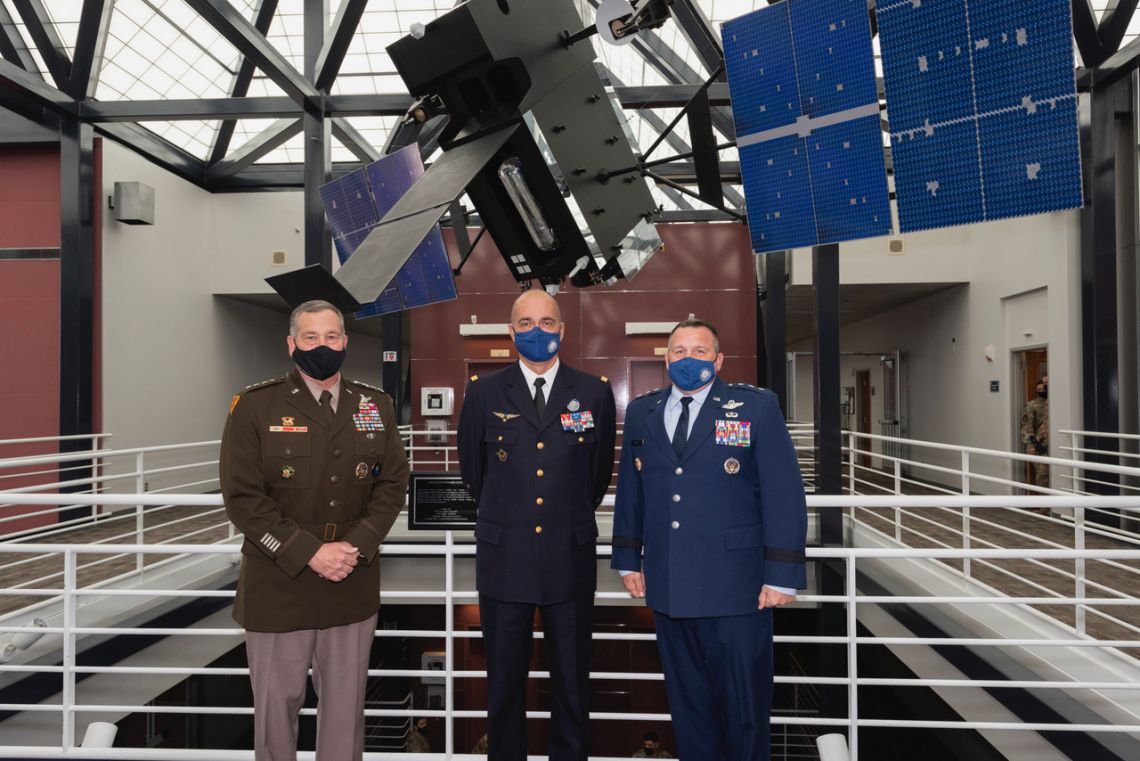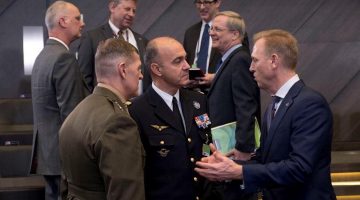Developing a Common Understanding Picture
This is the first of a series of articles – a version of which has been published as one single article in the Canadian bimonthly Frontline Defence Magazine – focusing on some of NATO’s challenges and the way the Alliance is addressing them through the prism of the action of one of its two commands, Allied Command Transformation (ACT). It is based on various interviews conducted in Norfolk, Virginia, and in particular with Supreme Allied Transformation Commander (SACT) General Denis Mercier.
In the wake of last February’s NATO Defense ministers’ two-day meeting in Brussels, the reform of the command structure and the evolution of the NATO-EU (European Union) relationship have filled the headlines, the context and preparing grounds for which are to be highlighted. Below are explained the need and process for developing a common understanding picture. The following articles will show the need and process for developing a common situational awareness and a common technological awareness.
3 C’s rules exist in various fields of endeavor and in every language. In English, there’s the 3 C’s rule in marketing (Company, Customers, Competitors), credit (Character, Capacity, Capital), negotiation (Confrontation, Cooperation, Collaboration), web design (Content, Code, Conception) and even relationships (Communication, Cooperation, Compromise).
A year ago in March, in the midst of the public revival of NATO’s burdensharing debate triggered by the arrival of President Trump in the White House and prior to the May 2017 Brussels Summit, the Alliance’s Secretary General Jens Stoltenberg defined the agenda ahead following NATO’s own 3C’s rule: Cash, Capabilities, Commitment.
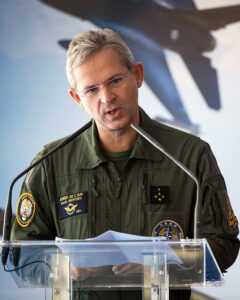
2015, Nov. 04. Supreme Allied Commander Transformation, Gen Denis Mercier,
during a Joint Press Conference after Trident Juncture 2015 live demonstration at San Gregorio training area, Spain.
(NATO Photo by NIC Edouard Bocquet)
As SACT General Mercier explains:
« the 3 C’s rule is important and has been reaffirmed: the 2% GDP goal is one of the objectives each NATO nation must aim at, but within these 2 %, 20 % must be spent on new capabilities, while making sure they are compliant with NATO’s standards of interoperability and ready to be deployed under the Alliance’s umbrella if need be. (…)
Besides the GDP percentage allocated to military resources, which has been a long-lasting goal in the past four years, what is changing in the midst of the adaptation process the Alliance is going through is what I refer to as a “persistent federated approach”, i.e. the establishment of a much more persistent bond between the command structure on the one hand, the force structure on the other.
One should indeed stress that NATO’s philosophy is based on a federated approach: NATO is not just a command structure commonly funded by the member states, but it is also the capabilities the latter provide to be able to fight as one. (…) The goal is not to establish a catalogue listing all available capabilities, but to best construct a force able to address today’s and tomorrow’s threats. » [1]
Easier said than done, when the specificities, histories, sensitivities of twenty-nine nations – Montenegro being the latest nation to join the North Atlantic Treaty Organization last June – have to be aligned into one single political guidance, which will then be translated into military capabilities.
There was one issued in 2011, then another one in 2015, and the two NATO strategic Commands – ACT (as the leader in this process) and ACO (Mons-based Allied Command Operations) – are currently working on the strategic military considerations to support the next one planned for 2019 in the aftermath of next July Summit planned in Brussels. The continued adaptation of the Alliance to the new threat environment, as well as the reassertion of missions aimed at projecting stability – such as the reinforcement of the post-war Iraqi training, which has just been announced at the Defense ministers’ meeting a few days ago – are among the sure guidelines to be pursued and proposed.
But what does it take to have 29 nations agree to a common strategic goal?
That is exactly what ACT’s task is all about. It starts with the definition of a common understanding picture, as, of course, each country’s threat assessment not only depends on its geography, history and politics, but also relies on its strategic culture and the existence of a structured capability development process that vary widely among nations. « Not all nations base their program laws on a formal defense review process or publish a defense white paper and we can help those who wish to assess and match their priorities according to their political and strategic national ambitions », explains Lieutenant-Colonel Pierre Ascencio, who is part of a ten people staff at SPP (Strategic Plan and Policy) directorate in ACT.
SPP is ACT’s brain and brainstorm on a regular basis via thematic workshops gathering a network of about 2,000 military and civilian experts from armed forces, but also academia, industries and medias.
The result comes under the form of three milestone documents:
- the Strategic Foresight Analysis (SFA), which identifies the trends affecting the future over the long-term : the latest one published last October projects the Alliance towards 2035, as it represents the time necessary to complete a full programmatic cycle from the decision to launch R&D till its FOC;
- the Framework for Future Alliance Operations (FFAO), which, along with ACO, narrows down the threats down to military scenario and implications for the Alliance: the next one is being reviewed and should be published next month;
- these two preparatory reports then feed the famous NATO Defence Planning Process (NDPP), conducted by the NATO HQ in Brussels and both strategic commands and aimed at advising nations in future program development to meet the Alliance’s level of ambition.
« One of the advantage of NATO », underlines SACT, « is to be able to give an unfettered military advice that nations are of course free to follow or not. Some of them have niche capabilities (such as Estonia which cyber expertise is remarkable) and we are able to orient them, so they can synchronize their future investments to complement other nations. We just happened to do that with Luxemburg, which satellite communications’ capabilities are to become part of the complex puzzle of forces NATO assembles into a ready to deploy force. The NDPP is there to orient national defence plans, and encourage countries to join forces in clusters of abilities such as smart defence initiatives or the Framework Nation Concept (FNC) developed by Germany a few years ago, enabling the building of large forces thanks to years of joint training between Germany and the nations willing to participate. »
At a time of a renewal of the everlasting debate about the NATO-EU relationship, it is not a bad idea to recall that these kinds of nations’ arrangements – such as the FNC – can and are already be used for other organizations than NATO, including the EU. It is also useful to highlight the fact that NATO’s NDPP actually helped the EU to develop its own capability-building processes, tools and scenarii, while NATO’s centers of excellence can be also used by NATO and the EU. « Each organization has its own deliverables, but we make sure our priorities are well coordinated. We have indeed been working very closely with the European Defense Agency over the past two years », says General Mercier.
For Lieutenant-Colonel Ascencio, the beauty of having a tool like SPP is to project one’s thinking in another nation’s mindset: « you cannot understand America for instance, if you have not studied Gettysburg and General Sherman », he notes, concluding that this effort to create and share a common vision and a global picture of the threat and geopolitical environment has lead ACT to become paradoxically « a place that the United States considers the voice of Europe and that Europe considers the voice of the United States »: a place of open and constant discussion, where all can try to amend their own thinking if a proposition is proven valid, and where, at the end of the day, a certain form of stability begins. The fact, for instance, that the recently issued SFA enacts a common perception of Russian activities for the first time since the end of the Cold war may seem obvious, but is in fact no small achievement considering the current propensity of nation states to look more inward for political and economic reasons or be at odds on sensitive issues.
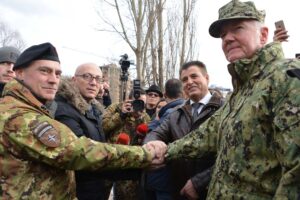
From left to right, Major General Salvatore Cuoci, Kosovo Force commander, Mr. Goran Rakic, Mitrovica north mayor, Mr. Agim Bahtiri, Mitrovica south mayor and Admiral James Foggo, Allied Joint Force Command Naples commander, share a symbolic handshake on the main Mitrovica bridge in Kosovo on Feb. 1. The meeting of the four leaders follows the January 16 assassination of Kosovo Serb politician Oliver Ivanovic. (Credit: https://jfcnaples.nato.int/newsroom/news/2018/maintaining-bridges-for-a-better-world )
Footnotes:
[1] and [2] interviews conducted at ACT, Norfolk, January 2018
Photo © Credit photo: NATO ACT Twitter and youtube video “Training and Exercises”, January 14th, 2018


